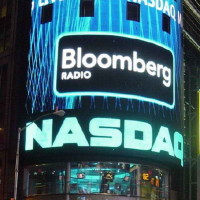Fundamental vs Technical Analysis, two stock-picking methodologies riveting in contrast; yet both parties are pursuing the same objectives, to capitalize on their equity. Fundamental analysis allows us to have an overall long-term perspective of a company’s intrinsic value regardless of its unpredictability; whereas, Technical analysis studies chart activity and other various scenarios based of statistical studies.
Google (GOOG) trades at $1,224.19 per share, with a volume of 2.31M, and a market-capitalization of 408.52B. Whereas Apple (AAPL) trades at $532.75 per share, with a volume of 13.30M, and a market-cap of 469.70B. Clearly there’s a discrepancy between the former and latter; Google trades more than double the price of Apple; whereas Apple market value supersedes Google.
Twitter (TWTR) trades at $56.00 per share, with a volume of 8.15M, and a market-capitalization of 29.91B; whereas Facebook (FB) trades at $69.88 per share, with a volume of 66.90M, and a market-capitalization of 174.37B. The discrepancy between the price and market-capitalization only elaborates the price of a share’s inability to determine the intrinsic value of a company. Twitters market-capitalization is less than one-third that of Facebook, yet Facebook only trades around $15.00 more than Twitter.
Yahoo (YHOO) trades at $39.38 per share, with a volume of 16.96M, and a market-capitalization of 39.17B; and although Yahoo stocks are cheaper than Twitter (TWTR) the company’s estimated value is higher. To calculate a company’s overall value you multiple the current trading price (per-share) times the number of shares outstanding.
The fluctuation of the trading volume tends to predicate whether a stock appreciate or depreciate; volume is never a rational calculative measurement to deduce a company’s value, because a low trading volume could be conducive to an expensive stock or lack of interest. Google (GOOG) 2.31M volume vs Apple (AAPL) 13.30M, a volume discrepancy because Google cost double that of Apple.
If a company wants to raise more capitals it can offer a 2-for-1 stock-split; the outstanding shares would increase while the stock-price per share decreases. Meaning your shares double while the value splits into increments across added shares. Whereas reverse stock-splits is a company’s rogue attempt to avoid delisting from the Security and Exchange Commission (SEC), this happens when their market-value falls below the minimum required amount.
The stock-market has two basic analytic schools of thought, fundamental analysis vs technical analysis; fundamentalist analysis tends to study a company’s annual report, financial statement, proxy statement or quarterly news etc…The company’s price, market value, trading volume, expenditure, revenue, outstanding balance etc. Risk factors, legal proceedings, including footnotes helps an investor become more intimate with a company.
Technical analysis is the study of charts, statistical studies and not necessarily intrinsic research, they believe preceding patterns and past price movements can somehow predetermine the future of the market, a somewhat method of predictability, and although technical analyst take price, volume, news and other attributes into the equation, the rudiments of their decision making are contingent on the study of patterns.
Technical traders are the arbitrary oracles of the stock-market; a somewhat pseudo-scientific approach to investing, one equatable to the astrological regurgitation of astronomy (correlating celestial bodies with human behavior) or the law of attraction regurgitation of quantum mechanics. (Extracting scientific tenets to contrive analogy/metaphor) they’re anecdotal and not inferential.
 Atelston Fitzgerald Holder 1st, Writer, Journalist & Lecturer Please Visit Official Website www.mrpregnant.com Appeared on over 20 different Cable & TV Networks.
Atelston Fitzgerald Holder 1st, Writer, Journalist & Lecturer Please Visit Official Website www.mrpregnant.com Appeared on over 20 different Cable & TV Networks.
Connect with him on Facebook mrpregnant Twitter mrpregnant and Linkedin mrpregnant












Roger Peters
Dead on with the charts analysis, the trading price can never determine the overall company’s value, other that studying the financial report and proxy statement. I do periodically trade technically because pattern recognition has been proven to be somewhat effective depending on the news and other unexpected scenarios. So I guess fundamental analysis serves better for long term investments?
I’m into mutual funds, hedge funds and buying and holding In the longevity. I do feel like fundamental vs technical as the only method might be a false dilemma, only because of how metaphors have pervaded the market as an investment tool. What’s your take?
Atelston Fitzgerald Holder 1st
Metaphors have promulgated the market, but not as a problem solving tool but an equatable reference between two mutually exclusive forms of existence. What’s interesting is the fact that when you try to paraphrase metaphors, you’re caught between two contrasting abstract domains; cognitivism vs non-cognitivism in the conceptual mappings between domains. Whether the correlating relationship can be theorized or it’s arbitrary. Hence, metaphors is pervasively treated as a figure of speech rather than a tool to execute trading.
Atelston Fitzgerald Holder 1st
Demystifying and simplifying complexed investment or economic jargon is another primary tool metaphors are used for. But metaphors in itself are quite intriguing; like today I’ve been pondering on “rainbows,” the most aesthetically appealing phenomenon in physics. The sun, ray, light and a tiny iota of a raindrop-mist predicating streams of colors of lights refracted from the raindrops sphere. I’ve seen this metaphor take on a myriad of interpretations; from spiritual, literal to arbitrary. The ambiguity of metaphors are intriguing and takes on many subjective and objective interpretations.